What 11 Artists Have Created During Quarantine
Sheltering in place for at least two months has meant different things to everyone: new work-from-home situations, uncertainty, and adjustments to the new normal. In light of shifting situations around the globe, AD wanted to discover what quarantine has meant to various artists working in isolation and what effect this unprecedented time has had on their work and creativity.
Ugo Rondinone
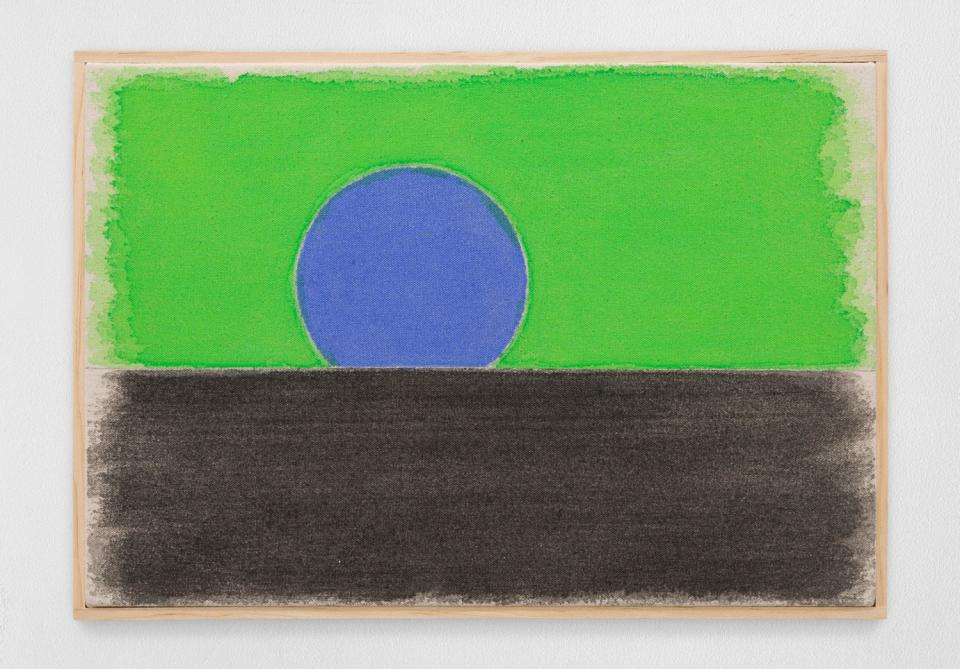
Swiss multimedia artist Ugo Rondinone, a global art presence, is perhaps best known for his fluorescent painted Seven Magic Mountains sculptures installed in the Nevada desert in 2016. Rondinone’s wide-ranging, powerful work addresses the concepts of time, meditation, and slowing down. “Finding myself in an empty studio for [the last six] weeks, I resorted to an intimate work: writing one-line poem drawings, which I haven’t done since 2003. And also brushing sunset/sunrise watercolors,” Rondinone tells AD from his studio in Harlem, which is a converted church. “This is a good time for me to work in silence—cocooning myself into my own time, these two pastimes I love most and tire of least.” ugorondinone.com
Eric Croes
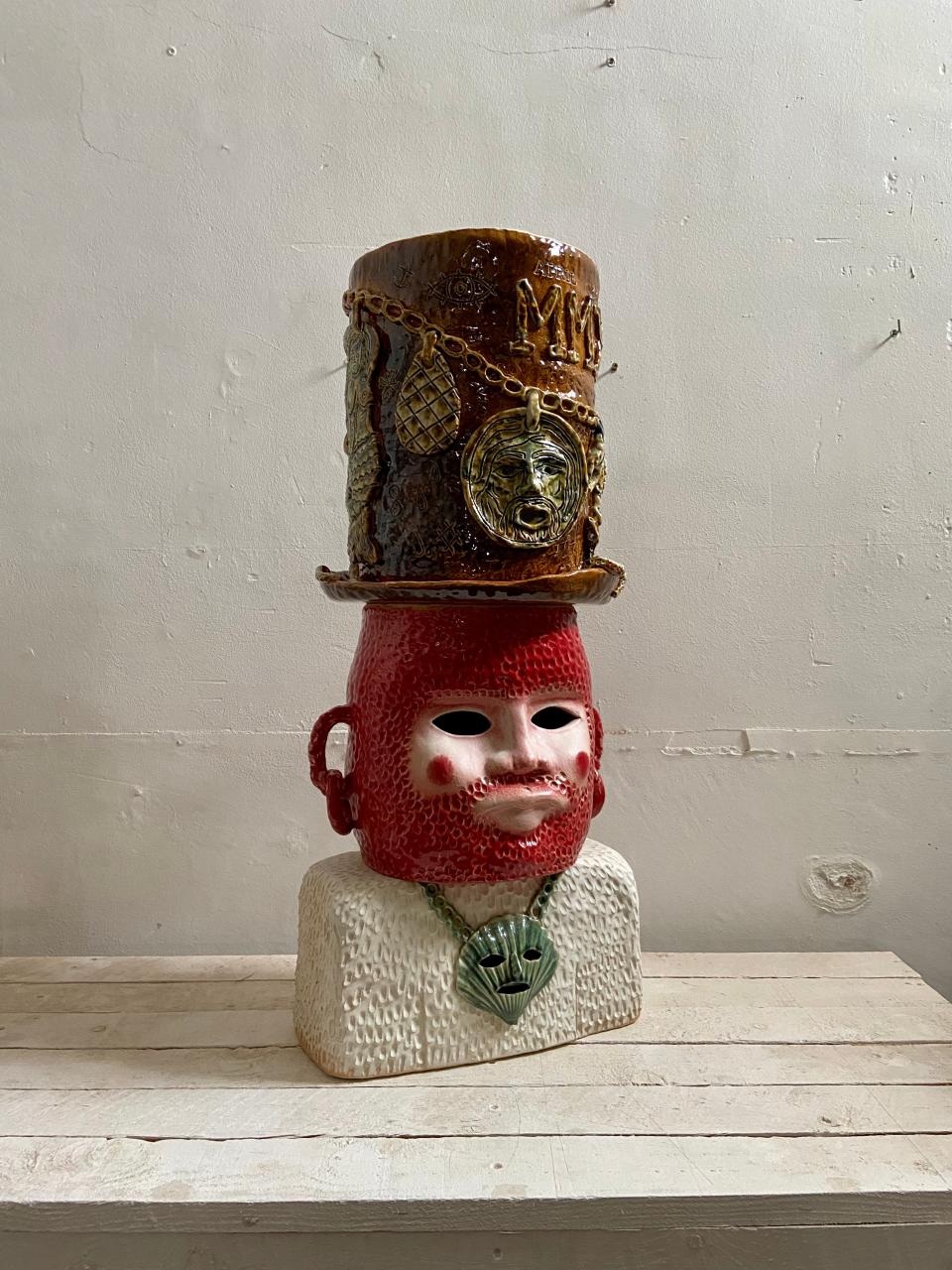
Belgian artist Eric Croes has been quietly working away in his studio in Brussels, a five-minute walk from his house. He has taken advantage of the short commute to bring his dog, Mammouth, a little dachshund, to and fro. Croes has been one to watch these past few years, building up an artistic practice of fanciful and colorful ceramic totems and sculptures, all highly personal. He once told AD that these works were ways for him to tell personal stories without bothering anyone. As for the past few weeks on lockdown, the artist says, “God never closes a door without leaving a window open.” Croes was meant to have a solo show mid-March at Sorry We’re Closed, his Brussels gallery, but he says, “Instead of drowning in melancholy, I took advantage of the time to throw myself into my work: I started working on a commission for the city of Nantes and it took an unexpected turn during this strange period. During the modeling process, it became something like an ex-voto covered with good luck charms. I wanted it to be like a good genie protecting the passersby. It’s also brought me good luck in the studio during this time.” instagram.com/eric.croes
Josh Sperling
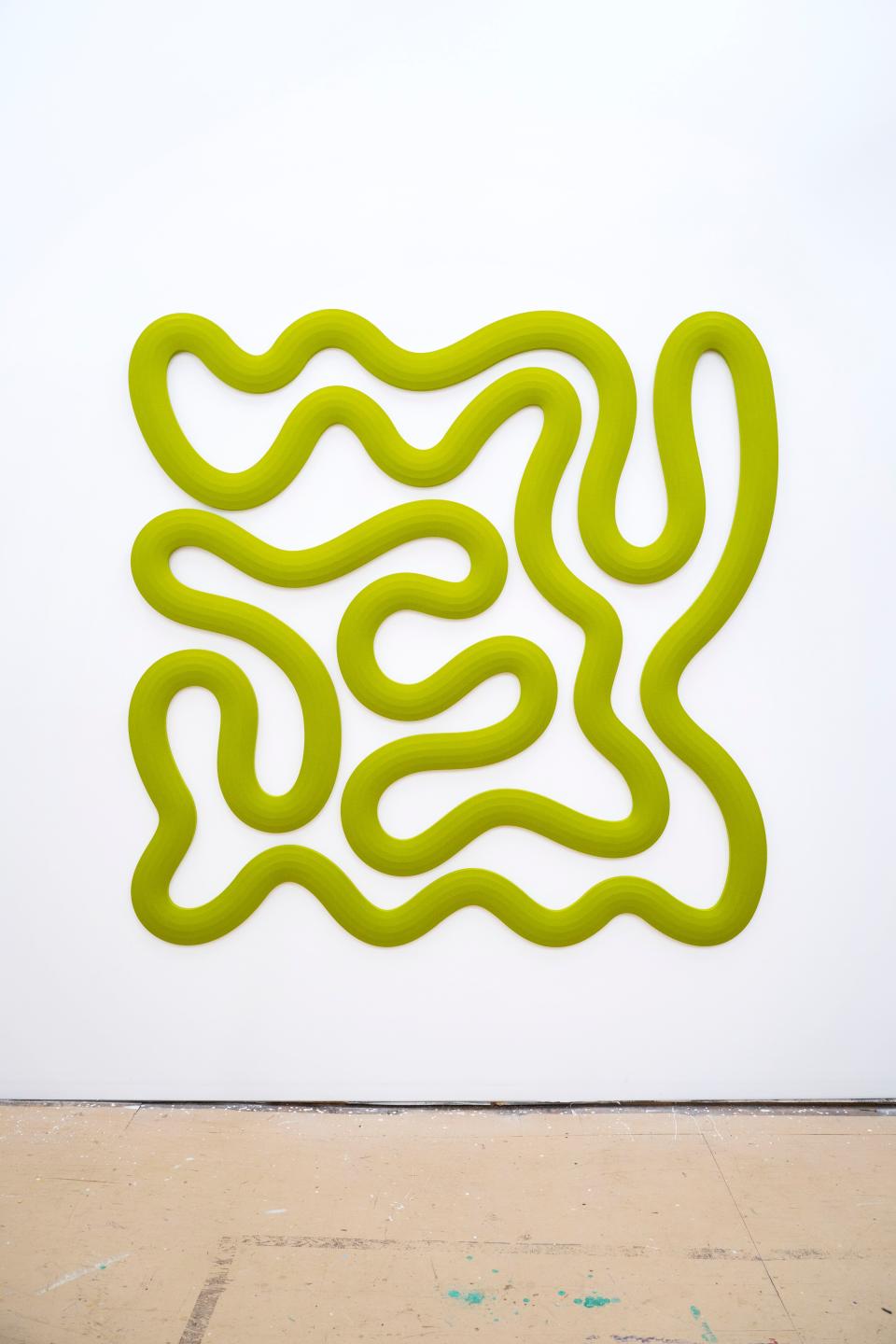
American artist Josh Sperling has been spending lockdown with his family at home in Ithaca, New York, where he also works. He is known for his shaped canvases painted with saturated colors, which live in a space between sculpture and painting. Sperling’s distinct visual vocabulary has made him a rising talent to watch these past few years. As with innumerable other working artists, many of his shows and art fairs have been canceled due to the global health crisis. But he has taken this challenging moment in stride. “I am not pressured to produce work and the extra time has afforded me the opportunity to experiment,” he tells AD. “This piece is a direct result of the extra time. I am constantly designing pieces that push the act of stretching canvas to its physical limit, and I often design shapes not knowing if it is even possible to stretch canvas over them. The pandemic has given me the extra time to turn past ideas into something real.” instagram.com/joshsperling
Julia Chiang
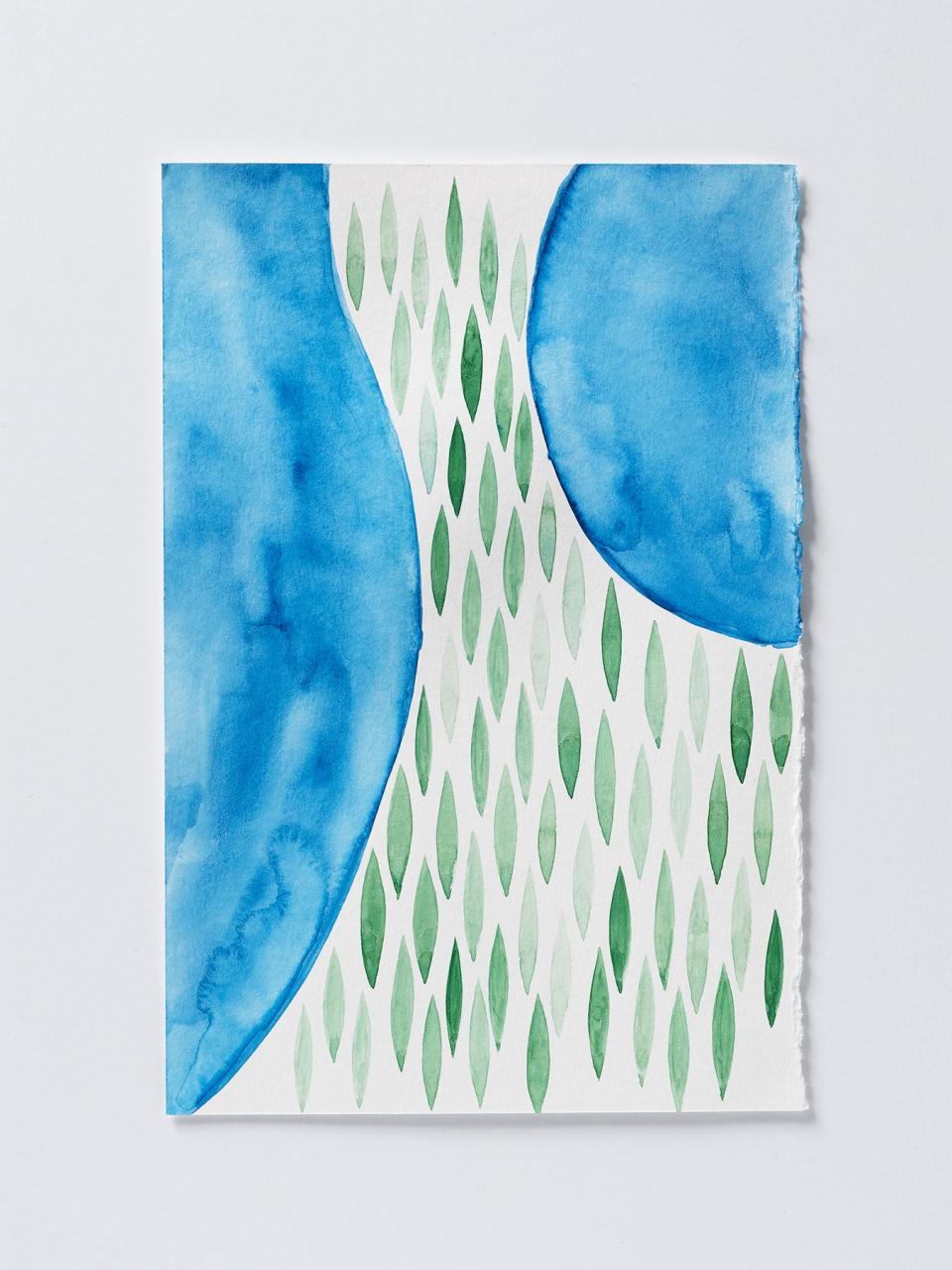
Would it surprise you to hear that of the five female artists contacted for this story, only two were able to participate? There are, of course, lots of moving parts for everyone, but running a household, cooking, cleaning, and taking care of kids were the reasons cited more than once for not being able to contribute right now. Brooklyn-based artist Julia Chiang, however, has carved out the time to do a series of watercolors on paper, some of which are being offered via Frieze online by her gallery, the Modern Institute. Twenty percent of sales is earmarked for Doctors Without Borders and the Glasgow Night Shelter for Destitute Asylum Seekers. Chiang titled each work with the date it was made, explaining, “I figured this is the time we are living [in], and the reason I started them was because of this unique time we’re all sharing, so why not just mark these dates.” Being an artist and a mom of two small children just adds to all of the challenges of everyday life. Chiang tells AD, “The scale [of watercolor] allows me to move quickly between kids. I usually make them while the girls are making something too, so we work together.” instagram.com/juliachiang
Jean-Michel Othoniel
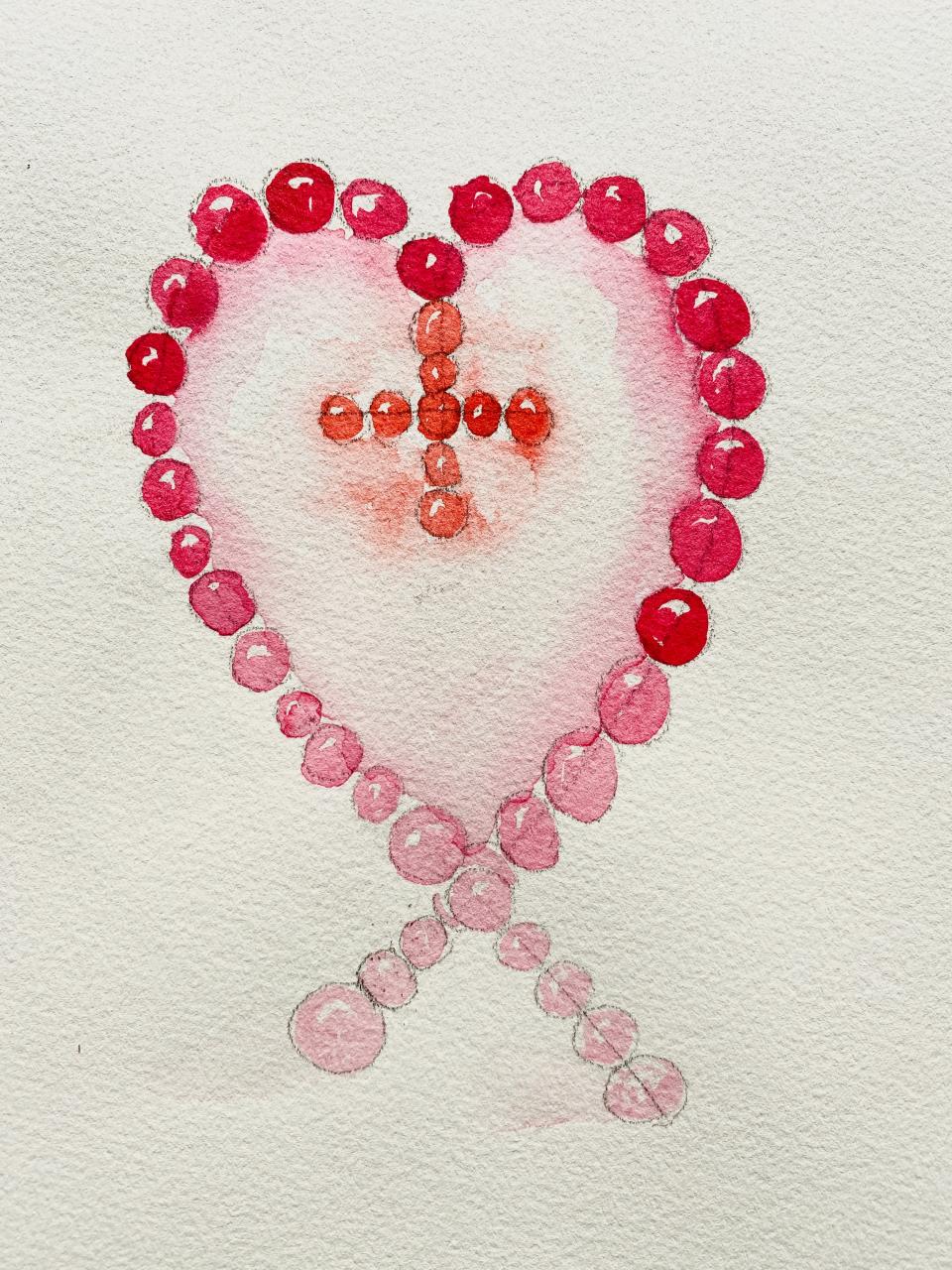
French artist Jean-Michel Othoniel has been sheltering at home and studio in Paris since the middle of March. Best known for his iconic handblown glass sculptures, Othoniel says, “At the beginning, I had to close my big studio with more than 10 assistants working for me. It was really hard, but we found a solution and they all work from home now. Then I was totally depressed for two weeks, [but] after this solemn period, I started to draw in my home studio, dreaming of sculptures for a better world.” His first drawing is a heart for the Red Cross, inviting his Instagram followers to donate to the organization.
At the same time, this prolific artist is considering the ways art can contribute to the world. “I am thinking a lot about the future and how to create a living space where you can experience a new intimacy with art you need to see or touch,” he says. Othoniel is also building a new studio with Johan Creten that he will open to artists and small groups of art lovers, a platform open to different communities created to engage people with art and education.
Eddie Martinez
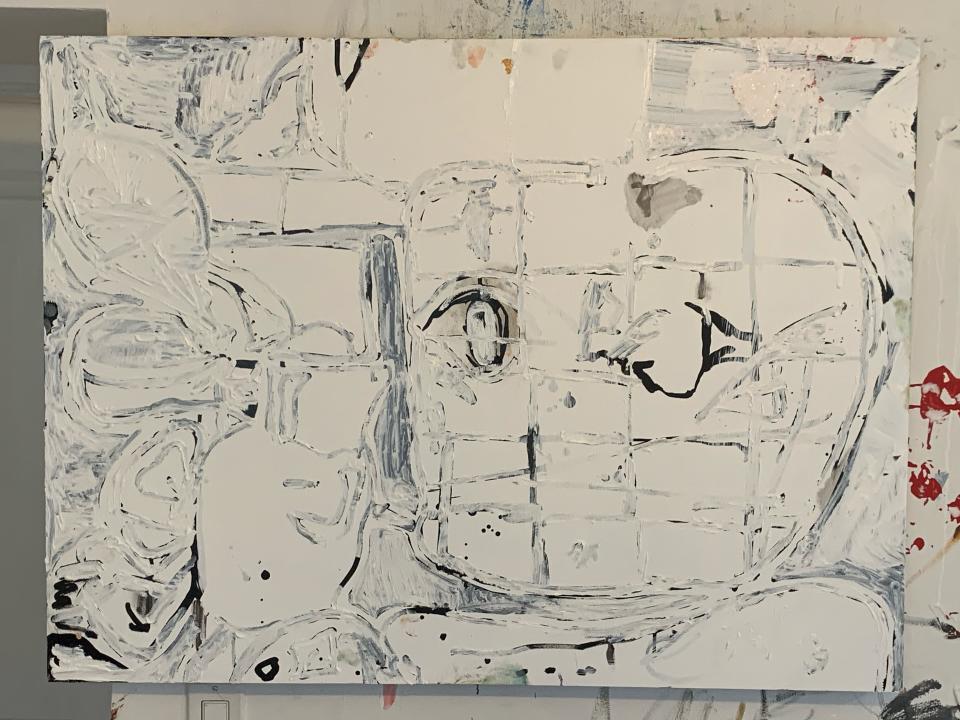
American painter Eddie Martinez has been busy in his Brooklyn studio working with both traditional and unconventional materials. “I have been working like a maniac, in fact, in my home studio, which I’m lucky enough to be able to do,” he says. Martinez has exhibited works from a series called White Outs over the past few years; in lockdown, he has continued to make drawings and paintings, fueled by emotion and anger. “Obviously there is a lot of anger and anxiety in this country right now, so I do feel some relief making these works and sharing them on Instagram, etcetera.” He also recently made a drawing and donated it to New York’s Coalition for the Homeless, along with other drawings to various NYC-focused COVID-19 support initiatives. instagram.com/elmersfud
Robert Nava
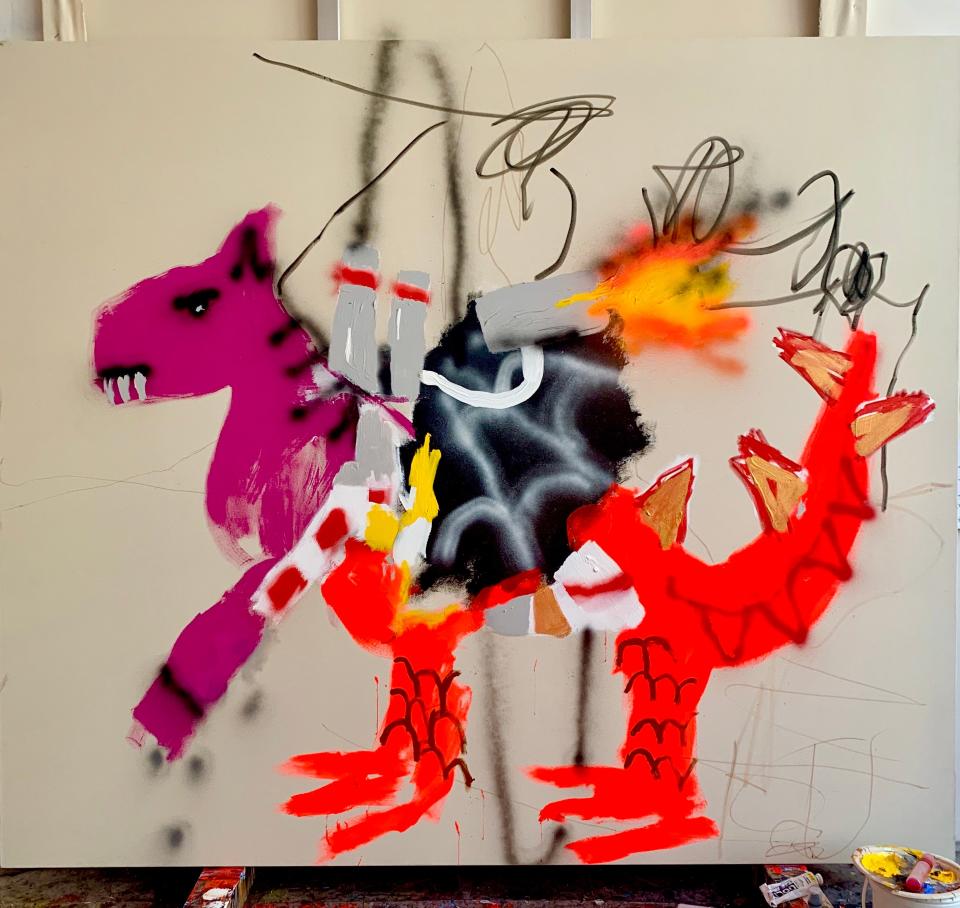
Emerging American painter Robert Nava has spent his isolation living and working in his Brooklyn studio. There is a raw energy that inhabits his canvas of thick paint and linework, with subjects that have been described as fantastical monsters. “Being lucky to live in the studio, and being able to paint in this time, really has shown me that art making can be such a therapeutic process on the soul,” Nava says. “Art can hopefully serve as a glimmer of hope during a time of doubt, across all genres.” Speaking of the above work created during the pandemic, Nava continues, “I was wanting to be something of an unseen myth, in a sense of being a protector and propelling forward. I wanted its face to show determination. The work is trying to look forward to what’s next.” instagram.com/robertnava7
Xavier Veilhan
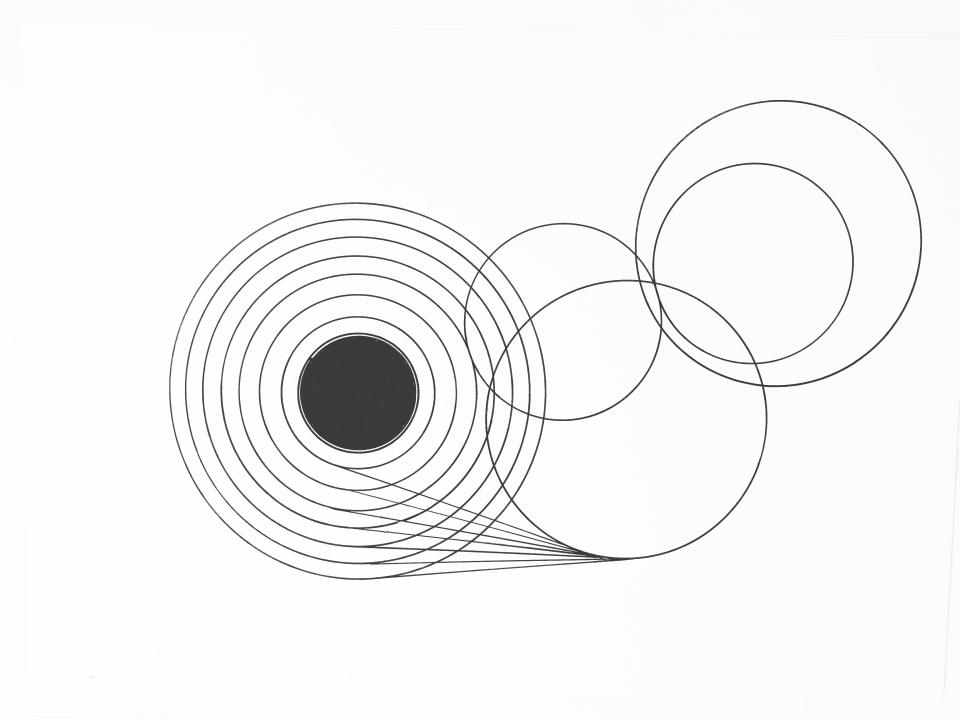
French artist Xavier Veilhan defies categories—his artistic practice encompasses filmmaking, installations, performances, sculpture, photography, and drawing, to name a few of his chosen media. Famed for representing France at the 57th Venice Biennale in 2017 and turning the French Pavilion into an immersive recording studio, he is also known for his larger-than-life sculptures. AD was interested to learn that the artist has been doing little drawings every day during confinement. When asked about these works, Veilhan says, “Every day for two months now, I do 40 minutes of exercise, then sketching, then cooking for five people, then drawing again, then cooking again. I love this routine, since what is appearing on the paper is more of a discovery than an invention.” instagram.com/xavier_veilhan
Liza Lou
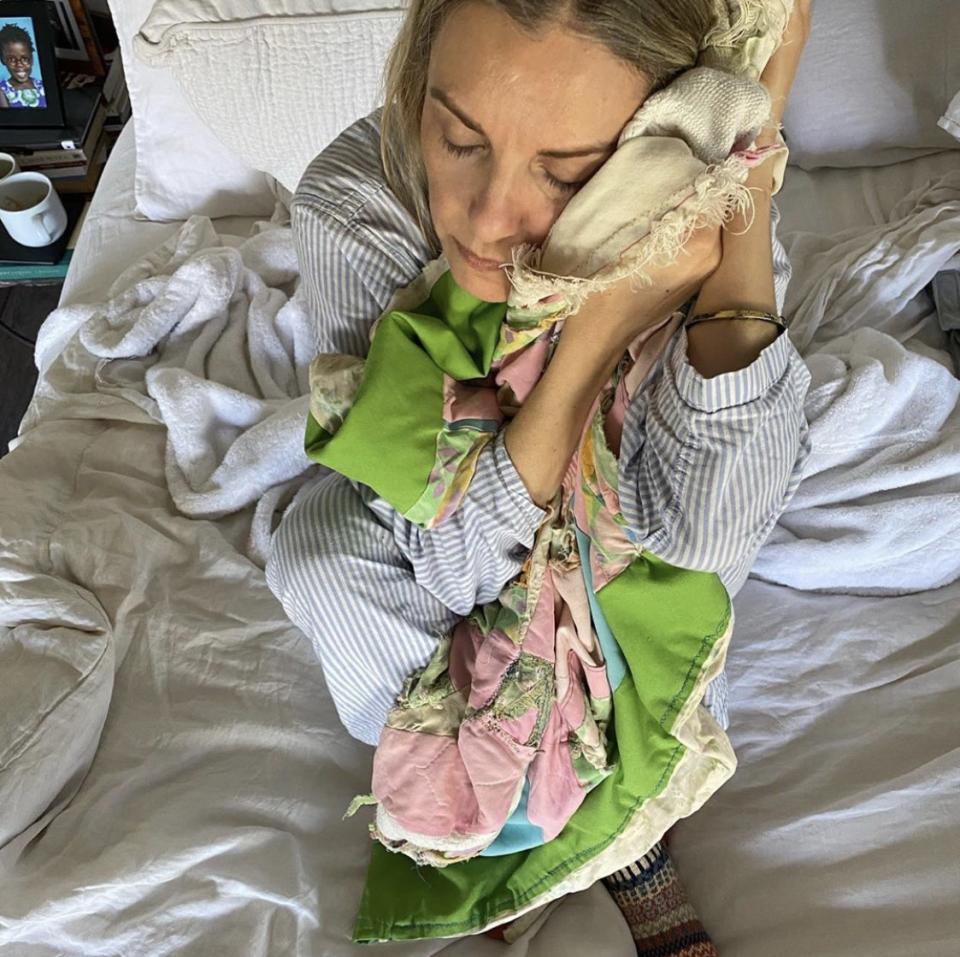
American artist Liza Lou has been working on a community project since the start of lockdown. From her studio in Los Angeles, the artist known for her large-scale sculpture and installations with glass beads has thrown herself wholeheartedly into an art initiative on Instagram. “These past few weeks, I’ve been asking myself what art means in times of trouble. It led me to start a community art project, Apartogether, on Instagram, inviting the public to make comfort blankets out of whatever material they have available and to use the hashtag #apartogether_art,” she explains.
“As part of the project, I’ve been doing live Instagram studio visits with other artists and archiving the conversations on the website. For me, this has felt like a moment to think about collaboration, community, and connection in an inexorable situation and to find ways to talk about the hope and courage that underpins all art making.” instagram.com/liza_lou_studio
Johan Creten

Before being contacted by AD for this article, Belgian artist Johan Creten was putting the finishing touches on a project he had taken up during confinement in Paris. Creten’s work, mostly sculpting in clay and bronze, often explores themes of nature, power, politics, and spirituality and expressions of what can be described as “the storm within.” During the summer of 1991, Creten was invited to spend time in the Villa Saint Clair, in Sète, in the South of France. This was a period during which the world was battling another pandemic. The artist worked on a show there called “Quarantine.”
Twenty-nine years later, in COVID-19 lockdown, Creten decided to tell a very personal and hopeful story through an experimental short film by Gerrit Schreurs, called En Quarantaine. The film premiered on his gallery’s Instagram a few weeks ago and is visible here. instagram.com/johan_creten
Peter Regli
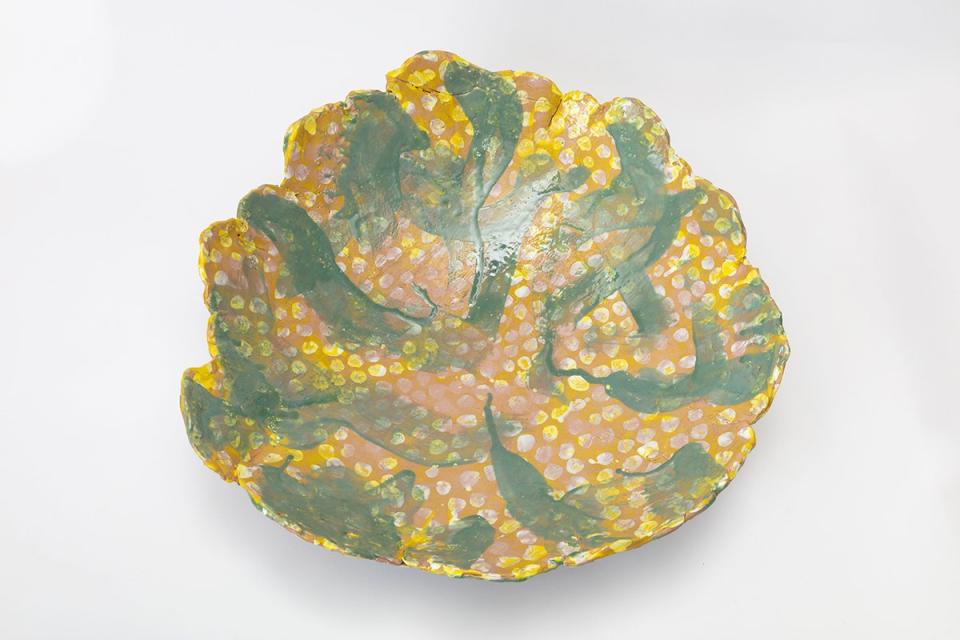
Like many of us, the New York–based, Swiss conceptual artist Peter Regli has been especially fixated on grocery shopping of late, as supermarkets offer the rare reprieve from sheltering in place. For him, however, produce isn’t simply the stuff of survival, it’s a source of sculpture. “I usually have a lot of fruits and vegetables in my house and I like to arrange them,” he told Lock Kresler of Lévy Gorvy, in a recent interview with the gallery. “I don’t put them in the fridge, I like to put them in bowls and display them everywhere. They become like sculptures.” Unhappy with the size of the average bowl, he has been creating his own, handcrafting large-scale ceramic vessels in a range of richly hued, seemingly vegetable-dyed glazes. A group of the monumental pieces just appeared in an online exhibition room at Lévy Gorvy, with a portion of the proceeds going to #FirstRespondersFirst, a Harvard initiative providing resources to health-care workers on the front lines of the pandemic. “It’s a changing thing,” Regli noted of his creations. “You don’t just leave the bowl there until the fruit’s rotten, you keep on using it. I eat it away not just for show, but for decoration. I like to eat a lot of fruit, so it’s fun.” These days, we all need fun.”—Sam Cochran
Originally Appeared on Architectural Digest

